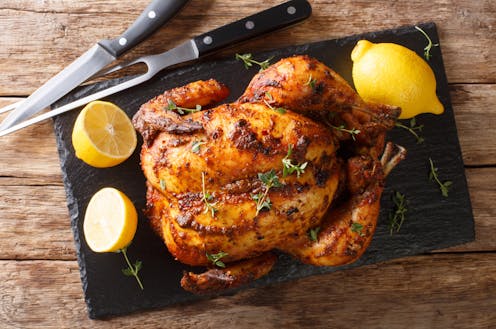Recent outbreaks of bird flu – in US dairy herds , poultry farms in Australia and elsewhere, and isolated cases in humans – have raised the issue of food safety. So can the virus transfer from infected farm animals to contaminate milk, meat or eggs? How likely is this? And what do we need to think about to minimise our risk when shopping for or preparing food? Bird flu (or avian influenza) is a bird disease caused by specific types of influenza virus. But the virus can also infect cows.
In the US , for instance, to date more than 80 dairy herds in at least nine states have been infected with the H5N1 version of the virus. Investigations are under way to confirm how this happened. But we do know infected birds can shed the virus in their saliva, nasal secretions and faeces.

So bird flu can potentially contaminate animal-derived food products during processing and manufacturing. Indeed, fragments of bird flu genetic material (RNA) were found in cow’s milk from the dairy herds associated with infected US farmers . However, the spread of bird flu among cattle, and possibly to humans, is likely to have been caused through contact with contaminated milking equipment , not the milk itself.
The test used to detect the virus in milk – which uses similar PCR technology to lab-based COVID tests – is also highly sensitive. This means it can detect very low levels of the bird flu RNA. But the test does not distinguish between live or inactivated virus, just that the RNA is prese.























